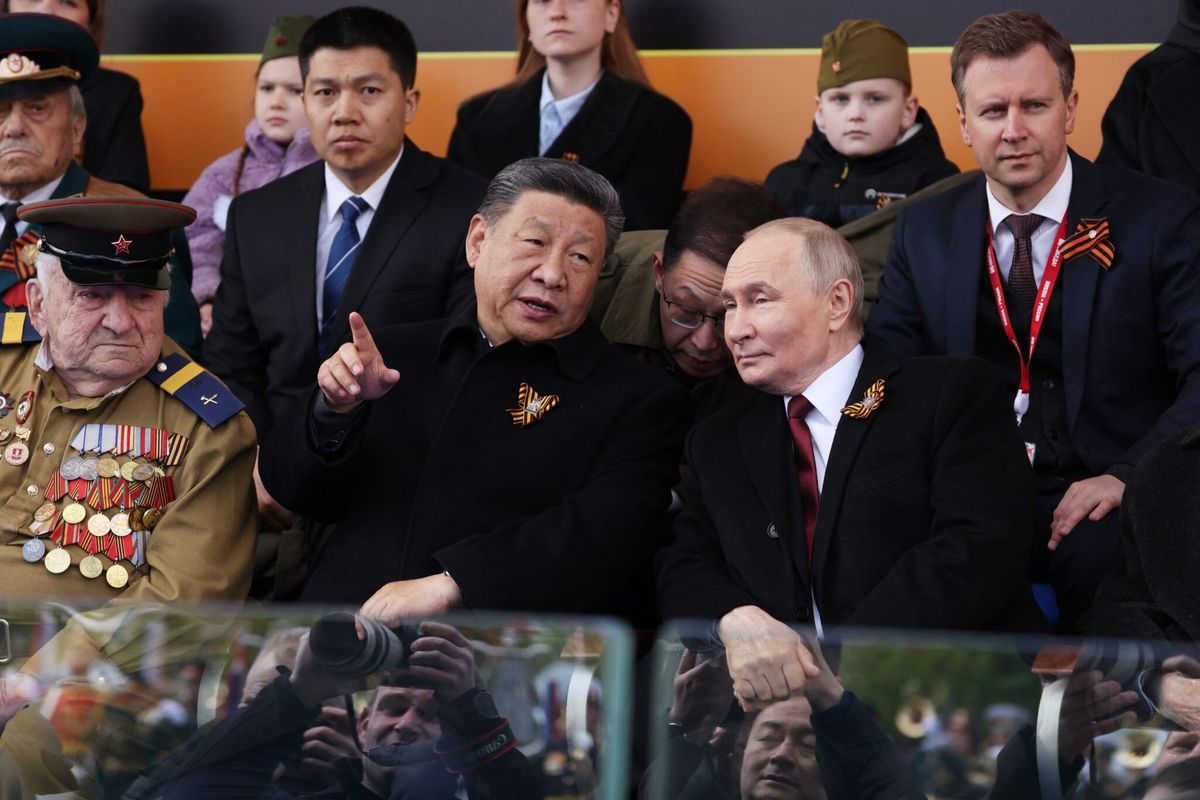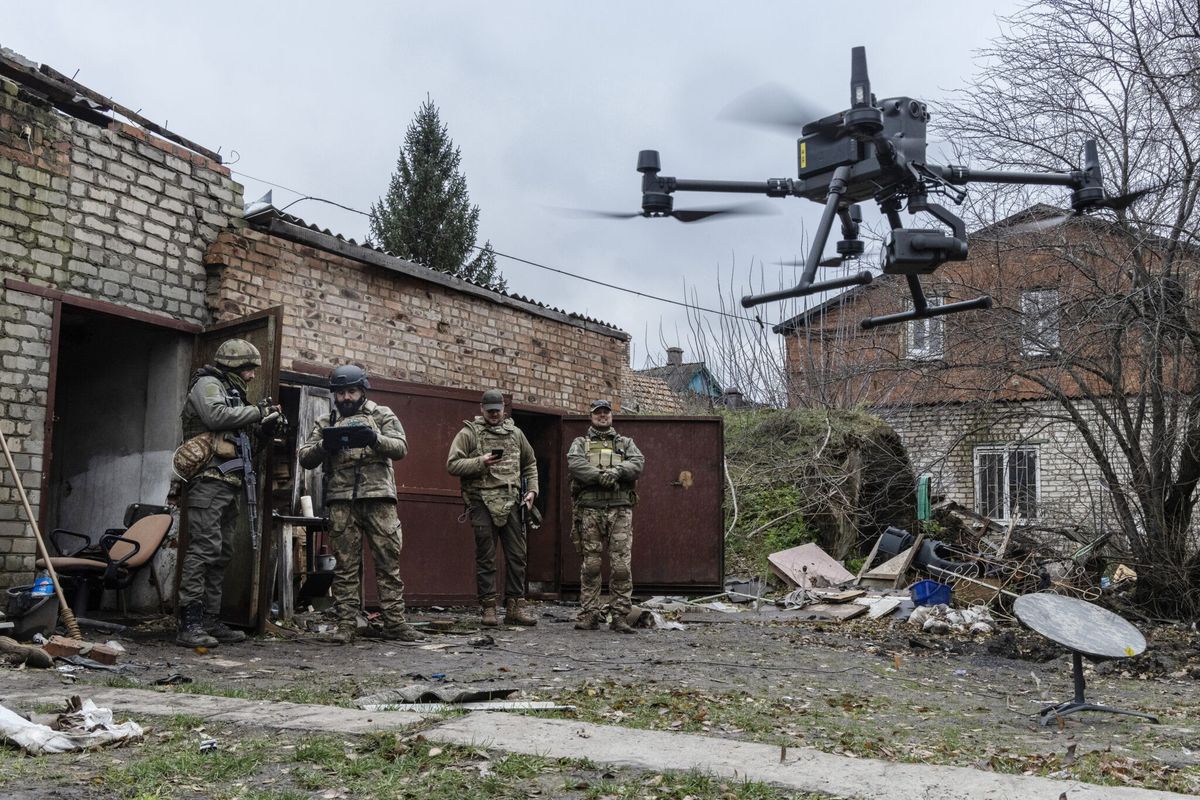SUBSCRIBER+ EXCLUSIVE REPORTING - As Russia’s war against Ukraine nears the two-year mark, perhaps the most staggering measure of the cost is this: Russia has lost more than 300,000 soldiers to death or injury. It’s a casualty count that nearly matches the size of the force Vladimir Putin deployed for the war, and it’s far higher than the losses in any campaign Moscow has waged since World War II.
It also begs a question: How is the Kremlin staying in the fight?
According to recently declassified U.S. intelligence, by the end of 2023, Russia's casualties had reached 87 percent of its pre-war force of 360,000. In December alone, Ukrainian authorities estimated Russian combat fatalities at 29,970 – the highest monthly toll since the war began. And in just the last two weeks of the months-long battle for the small city of Avdiivka, more than 5,000 Russian soldiers were reported killed.
Now, Russians appear to have captured Avdiivka, and the same officials assessing the Russian losses also note that Moscow has shown greater “resilience” than many anticipated, particularly after the Russian military’s early stumbles.
In the latter months of 2023, Russian forces stalled a much-anticipated Ukrainian counteroffensive, and throughout the current winter they have stepped up their missile and drone strikes, hitting infrastructure and civilian targets in several parts of the country.
How has Russia kept pace on the battlefield? The answers involve money, Kremlin-friendly nations and brutal measures taken by Putin himself.
Finding New Recruits - Wherever they can
From the start, Russia has enjoyed a numbers advantage: its population is 3.5 times that of Ukraine’s – giving the Kremlin a far larger pool of people to draw upon. Since September 2022 - a low point for the Russian invasion - Moscow has managed to bring at least 300,000 more men to the fight.
Many of these conscripts have been drawn from poor rural communities. Those who receive e-mail draft notices must report to their local recruitment office within 20 days or face harsh penalties that would hinder their ability to drive, work, take bank loans, or register real estate.
U.S. intelligence has also confirmed widespread reports that Russia has recruited heavily from its prison population, offering pardons to violent offenders in exchange for six months spent on the battlefield. Perhaps not surprisingly, given that the country’s penal system is notorious for lengthy prison terms and horrific conditions, many have chosen war over jail time. Tens of thousands of prisoners have heeded the call and as many as 20 percent of them are believed to have died in combat.
“Russia is currently recruiting men of different ages, prisoners, ultranationalists, soccer hooligans, and other men that it would not traditionally accept to serve in its Armed Forces on a military contract,” Kateryna Stepanenko, Russia Analyst and Deputy Team Lead at the Institute for the Study of War (ISW), told The Cipher Brief.
The BBC reported this month that the Kremlin has reneged on the original deal with convicts who agreed to fight. Fighters in an all-prisoner unit called “Storm V” have been told that the promised pardons are now off the table, and that they must fight until the end of the war.
“Before, you could wing it for six months, but now you have to make it until the end of the war,” a Storm V fighter named Sergei wrote on a chatroom for former prisoners in Ukraine. “If you sign up now, be ready to die.”
A Soldier’s Fortune
The Kremlin has regularly paired coercion with financial reward. Russia has upped the compensation for recruits to around $2,600 per month – a salary that far exceeds pre-invasion levels and is more than double the average Russian wage. For people in rural communities, it’s a fortune.
The government has also offered significant benefits to would-be fighters beyond its borders. Last summer, Moscow launched a controversial recruitment campaign – with a $5,300 one-time payment and a lucrative salary – in neighboring Kazakhstan, a former Soviet republic which is still home to some three million ethnic Russians. The Kremlin made the offer despite the fact that the government in Kazakhstan has refrained from public support for Putin’s war and has a law prohibiting citizens from joining foreign forces. In September 2022, Russia’s parliament also made it simpler for foreigners to obtain Russian citizenship, trimming the service mandate from three years to one.
Two years into the war, Russian employment search forums and portals are overflowing with offers for men to fight in Ukraine. And in an economy that has been battered by the war and western sanctions, the lure of higher wages is strong.
“Russian officials are deliberately targeting economically vulnerable communities in Russia with recruitment opportunities that offer salaries twice or three times higher than the national average, alongside generous state benefits,” Stepanenko said.
Sergey Sukhankin, a Senior Research Fellow at the Jamestown Foundation, told The Cipher Brief that “salaries received by Russian men on the frontline are unimaginable anywhere else in Russia, where the overwhelming number of people is very poor by Western standards.”
The Kremlin's Game Plan: Outlast Ukraine
Sukhankin says that given all the recruiting strategies, the huge Russian losses are “not as catastrophic” as they appear.
“If Russia were to lose 1,000-plus men, killed daily, then this would be a serious challenge that would require the Russian authorities to go ahead with (another) mobilization,” he said. “For now, current losses could be sustained.”
Sukhankin believes that’s because the Kremlin can effectively clamp down on any dissent the casualty toll might produce, and if the losses continue, the Kremlin can tap into additional communities.
“There is a large number of debtors who could be compelled to fight in Ukraine to deal with their financial arrears, or Russia could try to pay or lure (more) foreigners, ranging from Central Asian migrants to members of Latin American gangs, to take part in the war,” he said.
Russia may need to play these cards - and more. Multiple reports have highlighted the minimal Russian investment in combat medicine and training, which has left army doctors underprepared and undersupplied. Ukraine reportedly has a wounded-to-killed ratio of seven to one - meaning one in seven injured soldiers dies in battle. The figure for Russian soldiers is one in three.
The Russians have also held their own on the battlefield for reasons that have nothing to do with manpower. Despite a raft of Western sanctions, Russia has kept its coffers filled thanks to oil and gas revenues, and has procured critical ammunition supplies from North Korea and powerful drone weapons from Iran.
“Russia, which already has a de-facto wartime economy, has managed to divert large financial means to its war needs,” Sukhankin said. “On top of that, sanctions remain quite porous and allow Russia to receive all necessary components to continue producing weaponry. So even though initially, Russia’s military industrial complex was hit, now Russia is finding ways to find solutions.”
When Families Rise Up
Yet a question persists, as the Kremlin continues to find more young men to pour into the war zone: at what point will the number of Russian fatalities jeopardize Putin’s support among the Russian people?
Stepanenko noted regular reports of Russian families “discussing the loss of their loved ones in combat, lack of promised compensation payments, or the unavailability of information about missing Russian servicemen." A common complaint among families is that after mobilization, soldiers have been unable to communicate with relatives back home - and many have gone missing. "It is hard to tell," said Stepanenko, "to what extent this will catch up with the Russian public.”
On February 3, the Kremlin censored a Moscow protest held by the wives of soldiers. According to a report from the Institute for the Study of War, roughly 200 members of the “Way Home” movement laid flowers at the Tomb of the Unknown Soldier in Moscow and gathered at Manezhnaya Square to mark the 500th day since Vladimir Putin announced a “partial mobilization” in September 2022. Security forces arrested journalists who dared cover the two events.
The Kremlin is no doubt aware of the precedents set by such groups in past wars. The Committee of Soldiers’ Mothers was a powerful influence in the Soviet era, as the death toll of Soviet soldiers climbed in Afghanistan in the 1980s, and again during the wars in Chechnya in the 1990s.
For the time being, Moscow is working to silence such groups. And as the war enters its third year, the Kremlin's aim is to win via attrition, regardless of the cost in bloodshed.
“The Russian leadership believes that further offenses will demonstrate to the West that Russia can sustain its losses, which, according to Russia, should deepen existing rifts among Western countries and weaken their support for Ukraine,” Sukhankin said. “Russia’s strategy is to prolong the war to tire out Western support for Ukraine.”
Read more expert-driven national security insights, perspective and analysis in The Cipher Brief because National Security is Everyone’s Business.












